Amsterdam, the capital of the Netherlands, is a city blessed with a diverse ecosystem that supports several species of birds. The city’s numerous parks, canals, and green spaces provide abundant habitats for birds, making it a popular destination for birdwatchers and nature enthusiasts.
From the iconic swans and ducks that grace the canals to the rare and exotic species found in the city’s nature reserves, Amsterdam offers a unique experience for bird lovers.
Whether you are a resident or tourist, exploring the birdlife of Amsterdam is a delightful way to experience the city’s natural beauty.
1. Gulls
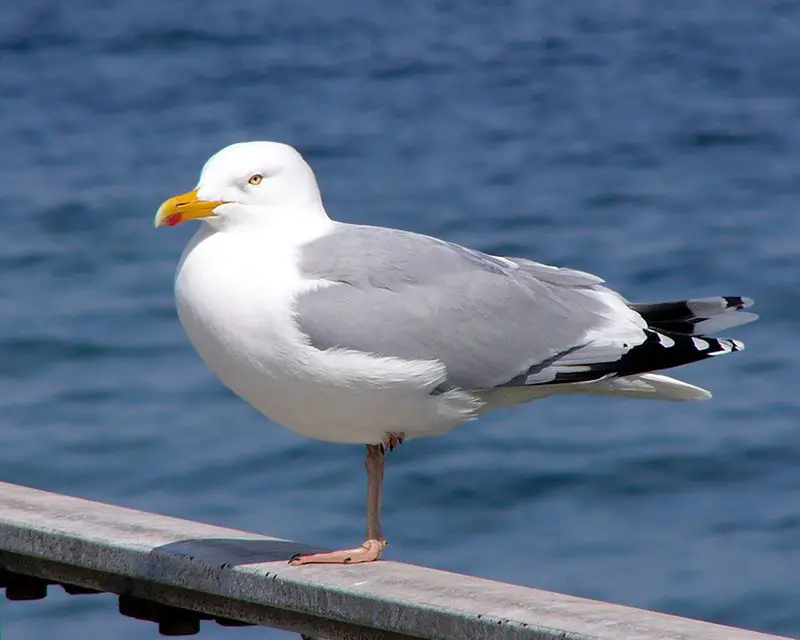
Gulls are a type of seabird in the family Laridae found worldwide. They are highly adaptable, often seen soaring above shorelines or near bodies of water.
Gulls have strong wings and long bills and vary greatly in size, colouration and behaviour from one species to another.
Some gull species feed on fish while others scavenge for food such as insects, small mammals or discarded human refuse.
Despite their different dietary habits they all share common traits including webbed feet which enable them to swim gracefully through the water after prey items like crabs or molluscs.
Gulls generally nest close to the shoreline where there is an abundance of available food sources making them excellent hunters that can live comfortably both on land and at sea.
Scientific classification:
| Kingdom | Animalia |
| Phylum | Chordata |
| Class | Aves |
| Order | Charadriiformes |
| Suborder | Lari |
| Family | Laridae Rafinesque, 1815 |
Also Featured In: Most Common Birds in China, Birds You’ll Find in the Sea
2. Coots
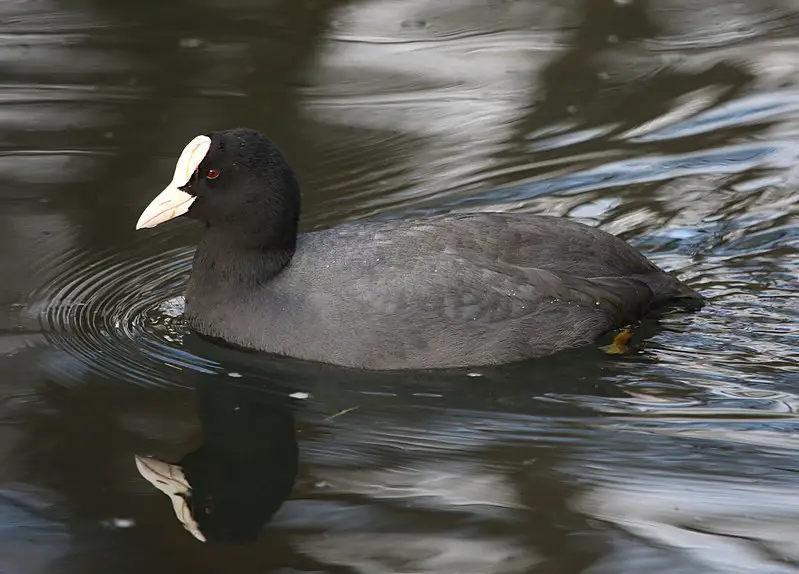
Coots are members of the rail family, Rallidae. They have black plumage and can often be seen swimming in open water.
Quite distinct from their close relatives – moorhens – coots appear dumpier and lack a red frontal shield on their forehead.
These birds reach an average length between 11 to 17 inches with wingspans ranging from 20-27 inches wide; they weigh up to 2 pounds when fully grown.
Coots feed mainly on plant material such as seeds, buds, fruits and leaves but will also eat small aquatic invertebrates like crustaceans or insects if available.
The nest is built by both parents using vegetation that has been collected at the edge of wetlands or ponds.
Which makes it difficult for predators to access them easily making them better protected than other species of bird nests found near water sources.
Scientific classification:
| Kingdom | Animalia |
| Phylum | Chordata |
| Class | Aves |
| Order | Gruiformes |
| Family | Rallidae |
| Genus | Fulica Linnaeus, 1758 |
Also Featured In: Flocks Birds around Us, Most Common Lake Birds
3. Common Kingfisher
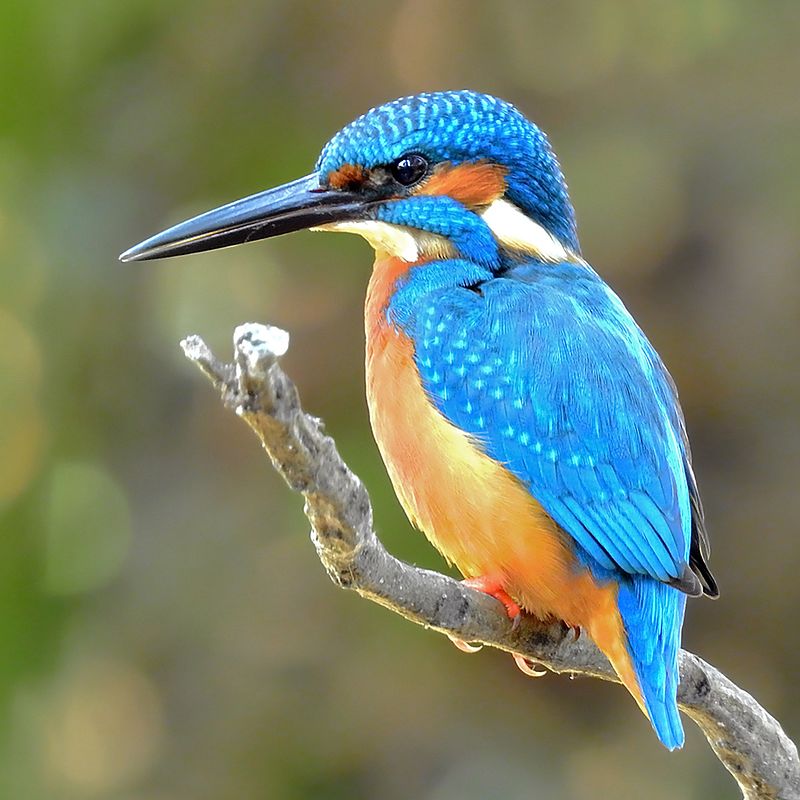
The Common Kingfisher is a small, sparrow-sized bird that can be found across Eurasia and North Africa. It has the typical short tail and large head of kingfishers with seven different subspecies recognized in its range.
They are mainly resident birds but will migrate away during winter when rivers freeze over. The species usually live near bodies of water such as streams or lakes.
Where they hunt for fish by diving from above into the water after spotting their prey below them.
These brightly coloured birds have an unmistakable vibrant blue plumage along with orange underparts and white patches on their wings which makes them easy to recognize amongst other similar looking species.
Their call is loud and shrill making it one of the most recognizable sounds heard around wetlands throughout Europe.
Scientific classification:
| Kingdom | Animalia |
| Phylum | Chordata |
| Class | Aves |
| Order | Coraciiformes |
| Family | Alcedinidae |
| Subfamily | Alcedininae |
| Genus | Alcedo |
| Species | A. atthis |
Also Featured In: Common Birds in India, Most Common Romanian Birds
4. Kingfisher
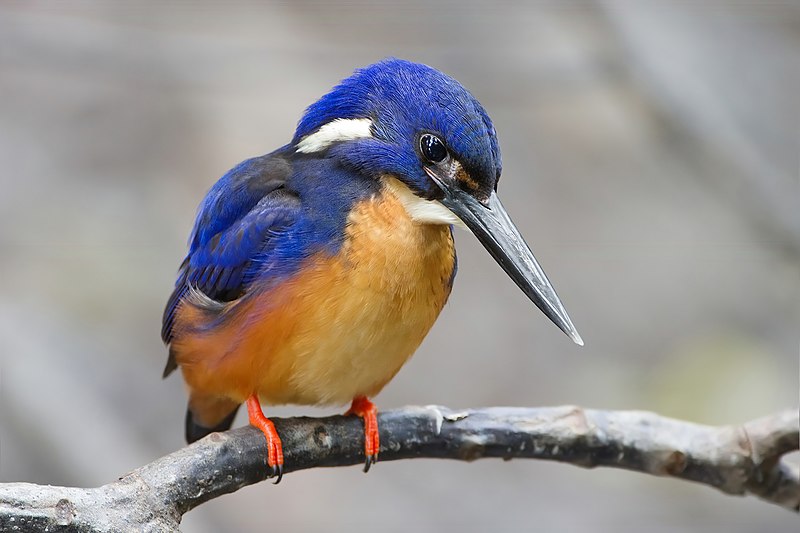
Kingfishers are a vibrant and unique family of birds, with most species found in tropical regions across Africa, Asia, Oceania and Europe.
Their bright colors make them easily identifiable among the foliage of deep forests near calm ponds or rivers.
They come in three subfamilies: tree kingfishers (Halcyoninae), water kingfishers (Cerylinae) and river kingfishers (Alcedinidae).
Kingfisher birds have short legs used for perching along branches overhanging streams or lakes; they also possess strong beaks perfect for catching fish.
These little hunters will remain motionless as if suspended from thin air until an unsuspecting prey comes within reach.
Then they swoop down quickly to grab their meal. With 116 different species making up this incredible family, there’s something special about every single one.
Scientific classification:
| Kingdom | Animalia |
| Phylum | Chordata |
| Class | Aves |
| Order | Coraciiformes |
| Suborder | Alcedines |
| Family | Alcedinidae Rafinesque, 1815 |
Also Featured In: Birds You’ll Find in Moldova, African Birds
5. Peregrine Falcon
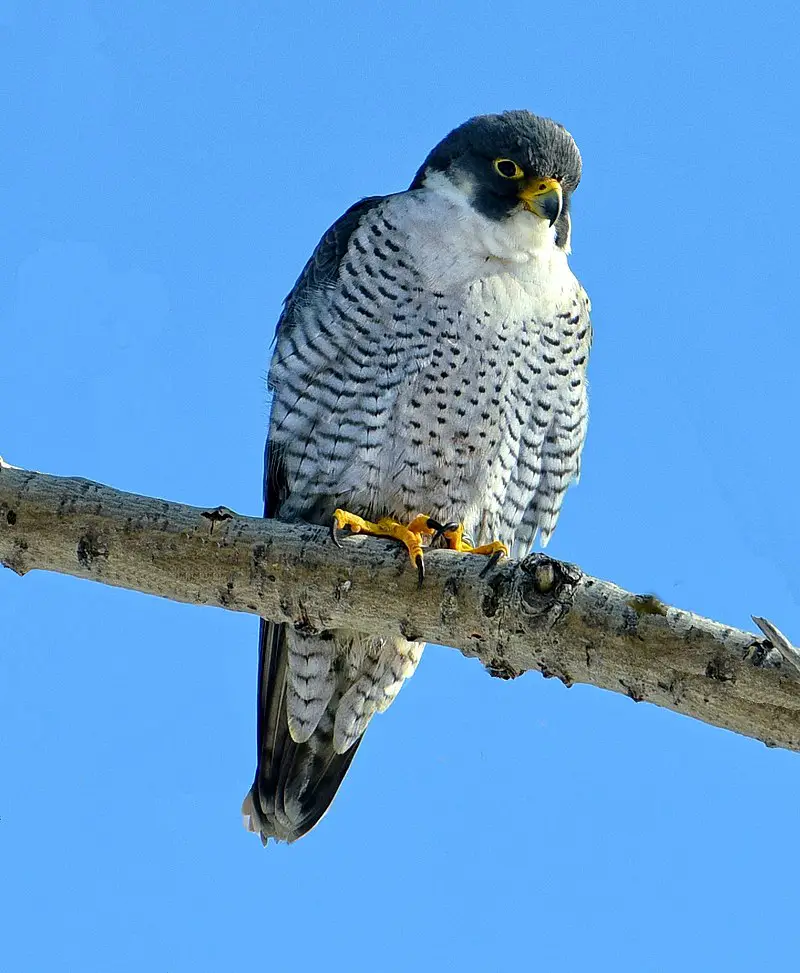
The Peregrine Falcon is a majestic bird of prey belonging to the family Falconidae. It has a blue-grey back, barred white underparts and black head making it easily recognizable.
This intelligent raptor is known for its incredible speed reaching over 320 km/h (200 mph) during hunting dives – one of the fastest animals in existence.
The peregrine falcon can be found around the world from Arctic tundra to tropical rainforests thriving with humans or in high alpine mountains far away from civilization.
With their beauty, power and adaptability they are an impressive species that have earned respect among many cultures throughout history as symbols of strength and endurance.
Scientific classification:
| Kingdom | Animalia |
| Phylum | Chordata |
| Class | Aves |
| Order | Falconiformes |
| Family | Falconidae |
| Genus | Falco |
| Species | F. peregrinus |
Also Featured In: Most Common United States Birds, Birds of Sweden
6. Herons
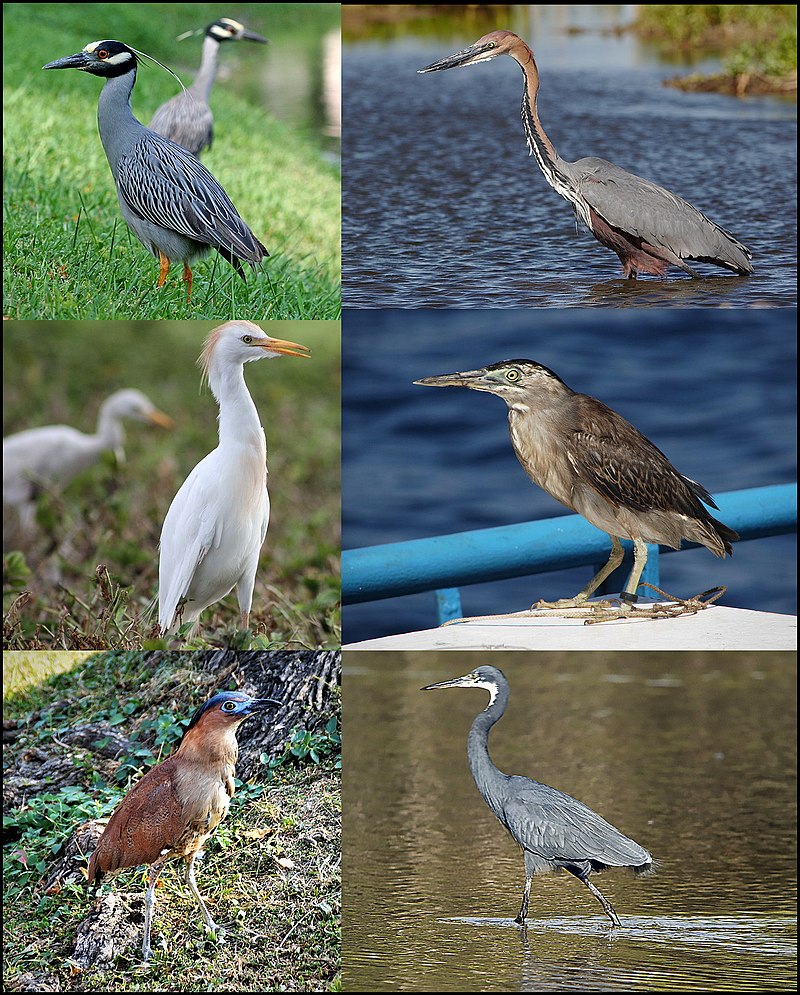
Herons are graceful and elegant birds belonging to the family Ardeidae, with 72 distinct species.
They have long legs and necks that are well-adapted for wading in shallow water like streams or ponds.
Herons can be found near freshwaters as well as along coastal areas worldwide.
Some of these species may also be referred to as egrets, bitterns or zigzag heron/bittern because they belong to certain genera such as Botaurus and Ixobrychus respectively.
These birds stand tall when searching for food by standing still in a shallow body of water while waiting patiently until prey appears before quickly capturing it with their sharp bills.
Scientific classification:
| Kingdom | Animalia |
| Phylum | Chordata |
| Class | Aves |
| Order | Pelecaniformes |
| Suborder | Ardei |
| Family | Ardeidae Leach, 1820 |
Also Featured In: Most Common Types of Bangladeshi Birds, Famous Paintings Birds
7. Grey Heron
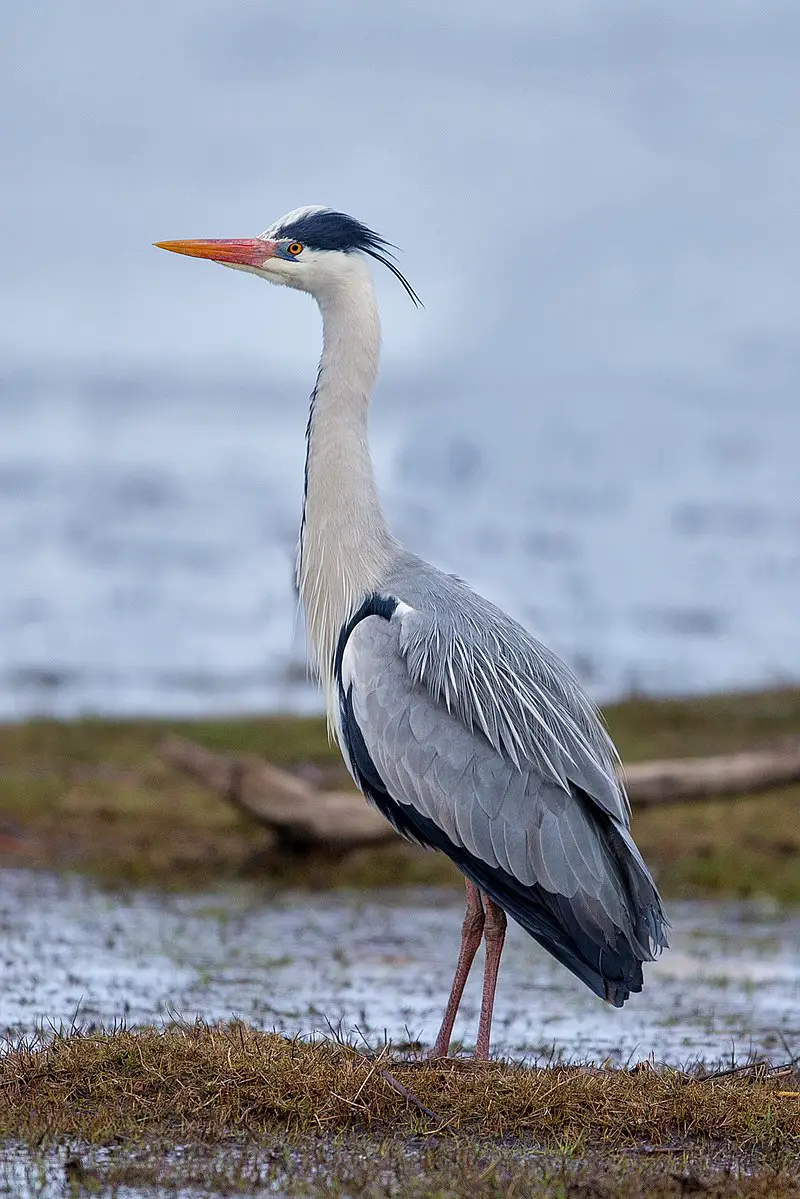
The grey heron is a majestic bird found in temperate regions of Europe, Asia and parts of Africa. It has long legs to wade through the shallow waters where it feeds on aquatic creatures such as frogs, fish and insects.
In wintertime some migrate southwards but others stay put in their natural habitats; lakes, rivers and marshes. They can also be spotted near coasts or along estuaries.
Grey Herons have beautiful blue-grey feathers and an impressive wingspan that makes them stand out from other birds when they soar gracefully across the sky.
These graceful creatures are not only easy on the eye but wise hunters too.
Scientific classification:
| Kingdom | Animalia |
| Phylum | Chordata |
| Class | Aves |
| Order | Pelecaniformes |
| Family | Ardeidae |
| Genus | Ardea |
| Species | A. cinerea |
Also Featured In: Common Birds in Japan, Common Serbian Birds
8. Egyptian Goose
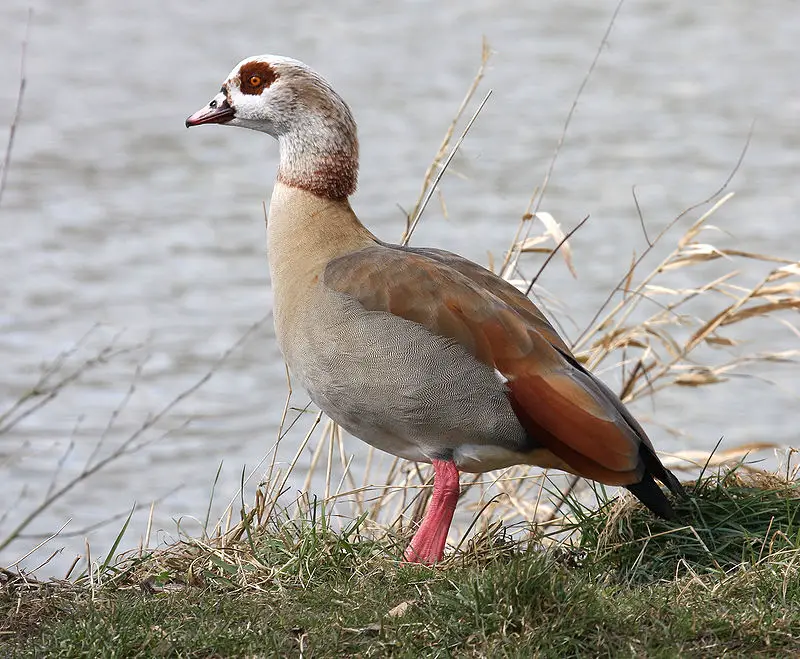
The Egyptian goose is a beautiful bird from the Anatidae family native to Africa. It has long been revered by the Ancient Egyptians, who depicted it in much of their artwork.
Today, these geese are kept as ornamental birds and commonly escape into the wild, resulting in an abundance of feral populations across southern Sahara and Nile Valley regions.
With its grayish-brown body featuring white patches around its neck and tail feathers that range from dark brown to bluish-grey coloration.
This species stands out amongst other waterfowls with its striking appearance which also features bold orange eyes surrounded by blue eye rings – quite remarkable.
As they swim along rivers or roam grasslands searching for food such as grains, fruits & vegetables; they make great additions to both aviary collections or natural habitats alike.
Scientific classification:
| Kingdom | Animalia |
| Phylum | Chordata |
| Class | Aves |
| Order | Anseriformes |
| Family | Anatidae |
| Genus | Alopochen |
| Species | A. aegyptiaca |
Also Featured In: Egyptian Birds, Savanna Birds You Need to See
9. White Stork
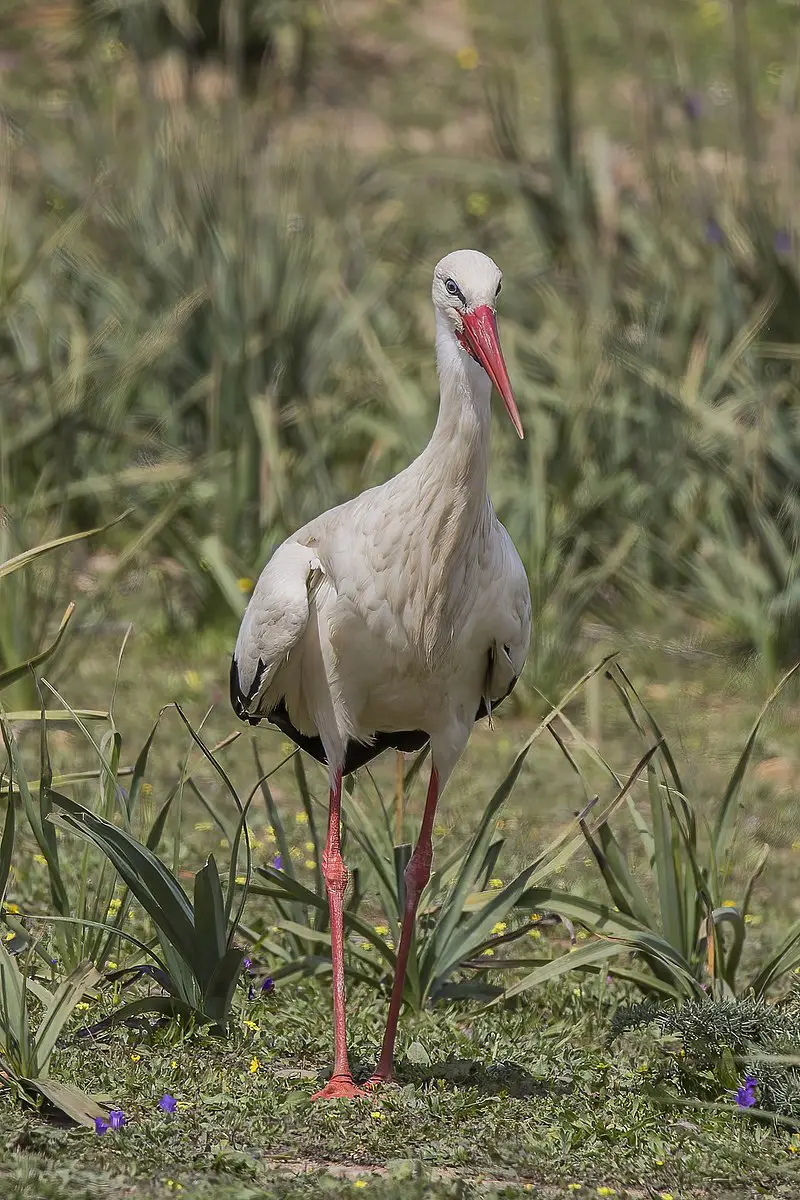
The White Stork is a majestic bird found in Europe, with white plumage and black wings. It has long slender legs and beaks that are usually bright red in color.
The average adult stands around 100 – 115 cm tall from beak to tail tip, while its wing span can reach up to 155-215 cm wide. There are two subspecies of the White Stork which differ slightly by size.
They feed on small animals such as frogs, fish or insects and nest near human dwellings due to the abundance of food available there; they also build nests atop chimneys or roofs when given the chance.
These birds have been revered for centuries as symbols of fertility because their return each spring often coincides with an increase in births among humans living nearby – something superstitious people take great note of.
Scientific classification:
| Kingdom | Animalia |
| Phylum | Chordata |
| Class | Aves |
| Order | Ciconiiformes |
| Family | Ciconiidae |
| Genus | Ciconia |
| Species | C. ciconia |
Also Featured In: Native Birds Of Germany, Belarus Birds You Should Know
10. Common Swift
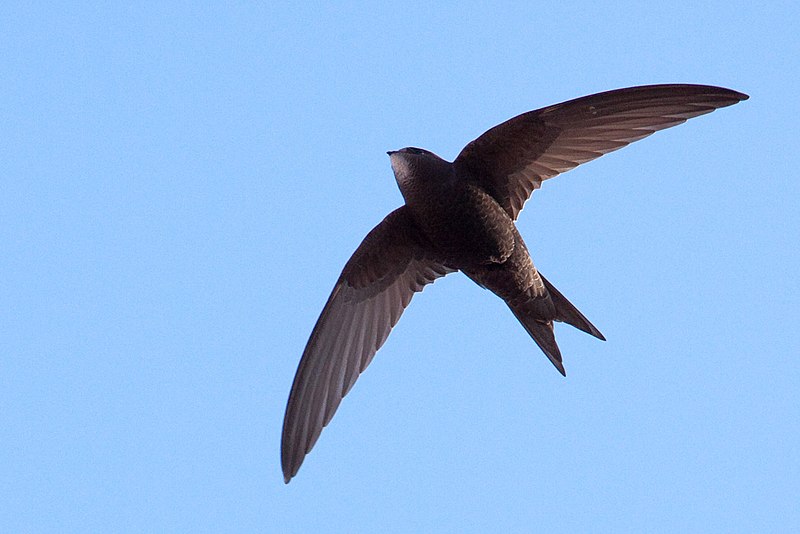
The Common swift is a medium-sized bird with an appearance similar to the barn swallow or house martin.
Its wings are larger, however it is not related to these species but instead belongs in its own order of Apodiformes.
The similarities between the two groups have come about due to convergent evolution and a shared environment.
As for relatives, they can be found among New World hummingbirds and South American swifts; whereas more distant cousins include nightjars as well as treeswifts from Asia/Africa and Australian swiftspecies.
These birds live up high in the air where they remain on constant flight even when sleeping or eating.
They usually migrate south during winter months then return again each springtime bringing life back into our skies.
Scientific classification:
| Kingdom | Animalia |
| Phylum | Chordata |
| Class | Aves |
| Order | Apodiformes |
| Family | Apodidae |
| Genus | Apus |
| Species | A. apus |
Also Featured In: Turkey Birds You Should Know, Birds of Latvia
11. Great Tit
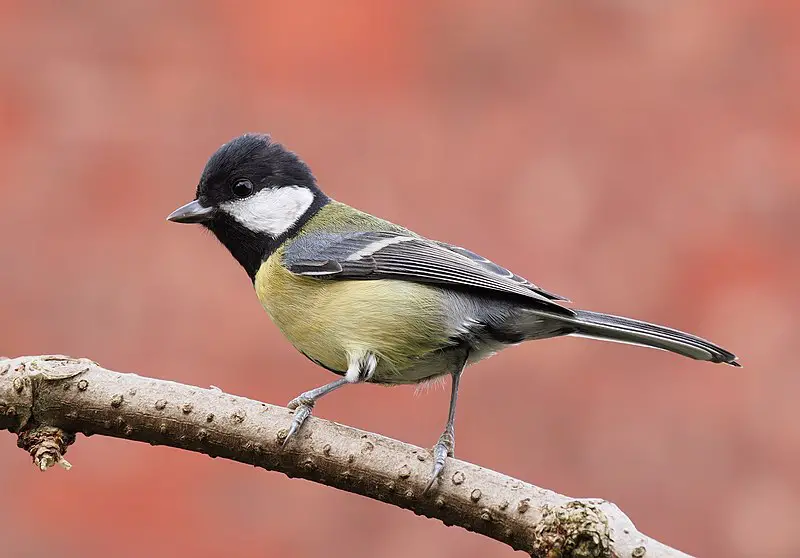
The Great Tit is a small passerine bird found in woodlands throughout Europe, the Middle East and Central Asia. Its beautiful black and white plumage with bold yellow or green patches make it easily distinguishable from other species of its family.
It generally does not migrate except for harsh winters but will stay resident in any kind of woodland area.
The diet consists mainly on insects, seeds and nuts which are found by searching through trees or scavenging from feeders placed near gardens.
Great Tits are also known to be clever problem solvers; they can open milk bottles left out unattended as well as cracking sunflower seeds that provide them essential nutrients during winter months when food is scarce.
Scientific classification:
| Kingdom | Animalia |
| Phylum | Chordata |
| Class | Aves |
| Order | Passeriformes |
| Family | Paridae |
| Genus | Parus |
| Species | P. major |
Also Featured In: Birds of United Kingdom, Italian Birds You Should Know
12. Black-Headed Gull
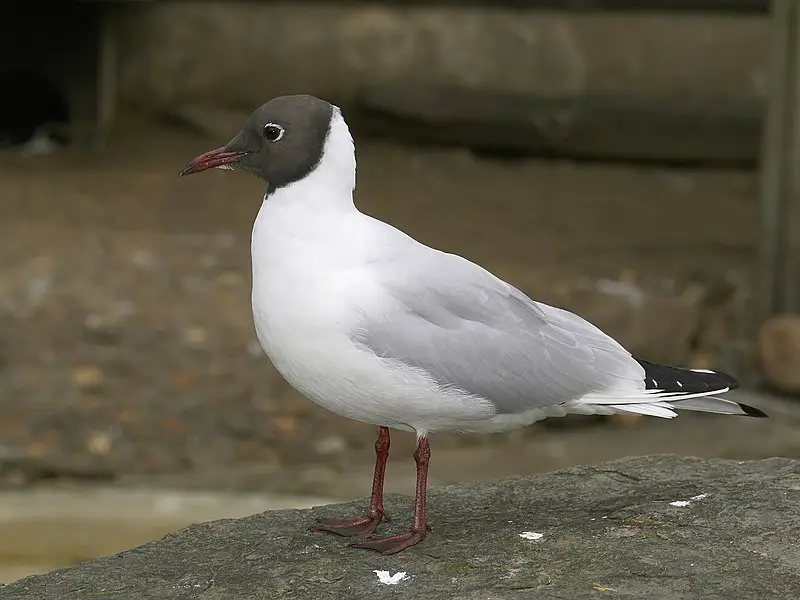
The Black-headed Gull is a small, migratory bird found in much of the Palearctic. It breeds mainly in Europe and coastal eastern Canada but can also be found further west in milder areas.
In North America it’s known as the Common Black-headed Gull.
Its plumage consists of grey on top with white underneath, while its head has a distinctive black cap during breeding season which fades to brown outside of this period.
They are often seen by coastlines or near inland waters where they feed off fish, insects and crustaceans caught either from the surface or underwater depending on their preference at that time.
Scientific classification:
| Kingdom | Animalia |
| Phylum | Chordata |
| Class | Aves |
| Order | Charadriiformes |
| Family | Laridae |
| Genus | Chroicocephalus |
| Species | C. ridibundus |
Also Featured In: Birds of Orkney, Moscow Birds You Need to See
13. Eurasian Coot
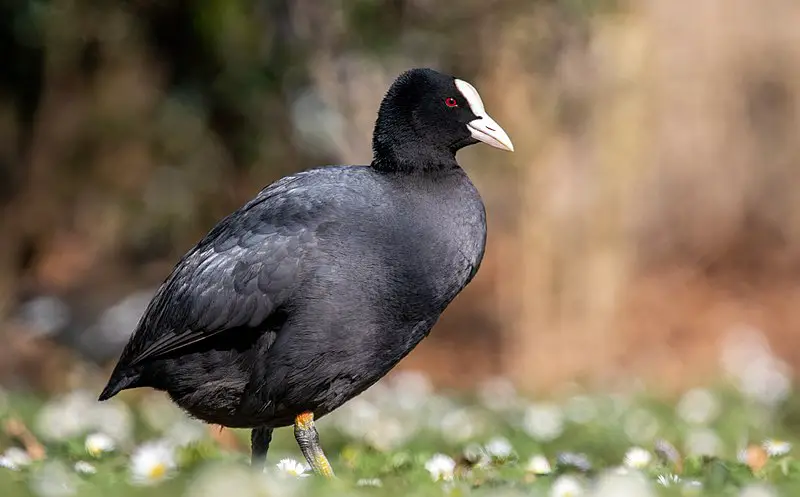
The Eurasian Coot is a water bird belonging to the Rallidae family. It has an overall slaty-black body with a glossy black head and white bill, along with a white frontal shield.
Both male and female coots look similar in appearance. This species can be found across Europe, Asia, Australia, New Zealand and parts of North Africa – making it quite widespread.
In terms of behavior they usually feed on aquatic plants as well as insects while swimming or walking on land near bodies of water such as ponds or lakes.
They are also known for their aggressive nature when defending nesting sites from other birds during breeding season.
Scientific classification:
| Kingdom | Animalia |
| Phylum | Chordata |
| Class | Aves |
| Order | Gruiformes |
| Family | Rallidae |
| Genus | Fulica |
| Species | F. atra |
Also Featured In: Birds of Poland, Birds that Commonly Found in Pond
14. Lesser Black-Backed Gull
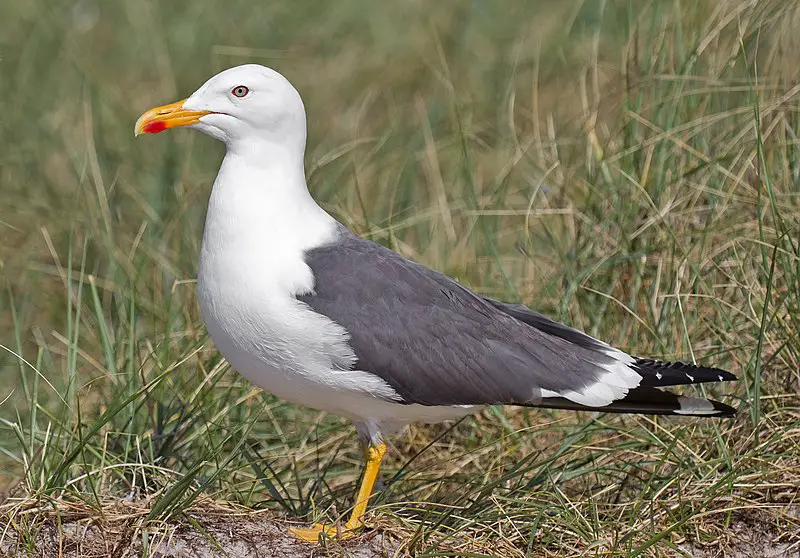
The lesser black-backed gull is a large, migratory bird found along the Atlantic coasts of Europe and North America.
During winter months they are commonly spotted along the British Isles to West Africa while in summer many birds can be seen year-round on both east and west coastlines.
In recent years numbers of these birds have risen dramatically with some winters having great abundances present throughout their range.
They measure around 48cm long with wingspans reaching up to 110 cm across when fully grown – making them larger than most other common gull species.
These hardy seabirds feed mainly on small fish, crustaceans, molluscs as well as carrion or scraps from human activities that occur near coastal areas such as fishing ports or refuse dumpsites.
Scientific classification:
| Kingdom | Animalia |
| Phylum | Chordata |
| Class | Aves |
| Order | Charadriiformes |
| Family | Laridae |
| Genus | Larus |
| Species | L. fuscus |
Also Featured In: Birds found in portugal, Most Common Scotland Birds
15. European Herring Gull
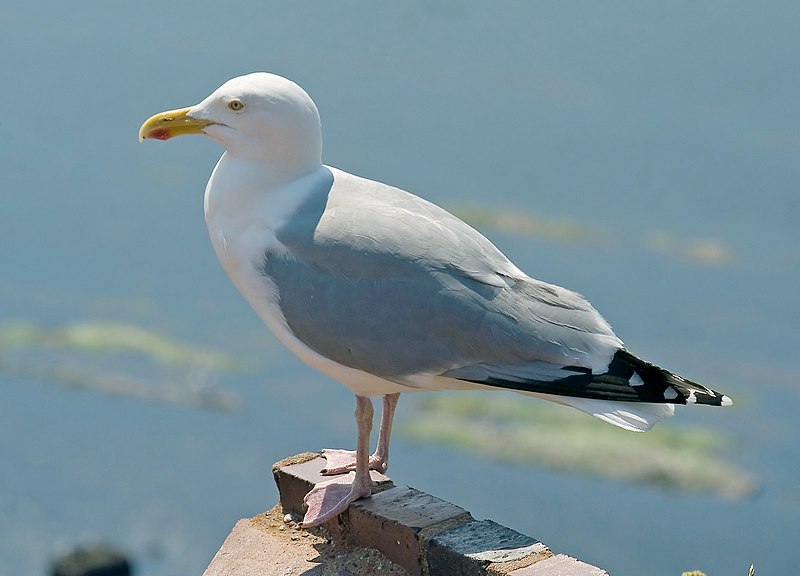
The European herring gull is one of the most recognizable birds, easily spotted along the shorelines of Western Europe.
It has a wingspan up to 66 cm long and can be found nesting across Northern Europe, Central Europe, Eastern Europe and Scandinavia.
During colder months many European herring gulls migrate further south in search for warmer temperatures which allows them to survive better during wintertime.
As scavengers they often take advantage of human debris or waste as food sources near populated areas such as beaches, parks and cities; however their diet also consists on fish, insects and other small animals that live nearby coastal regions.
Despite being common in some parts of its range this species may have experienced population declines due to habitat loss caused by human activities like urbanization but still remains abundant in others thanks to conservation efforts implemented over time by local authorities all around the world.
Scientific classification:
| Kingdom | Animalia |
| Phylum | Chordata |
| Class | Aves |
| Order | Charadriiformes |
| Family | Laridae |
| Genus | Larus |
| Species | L. argentatus |
Also Featured In: Ireland Birds, European Birds
16. Yellow-Legged Gull
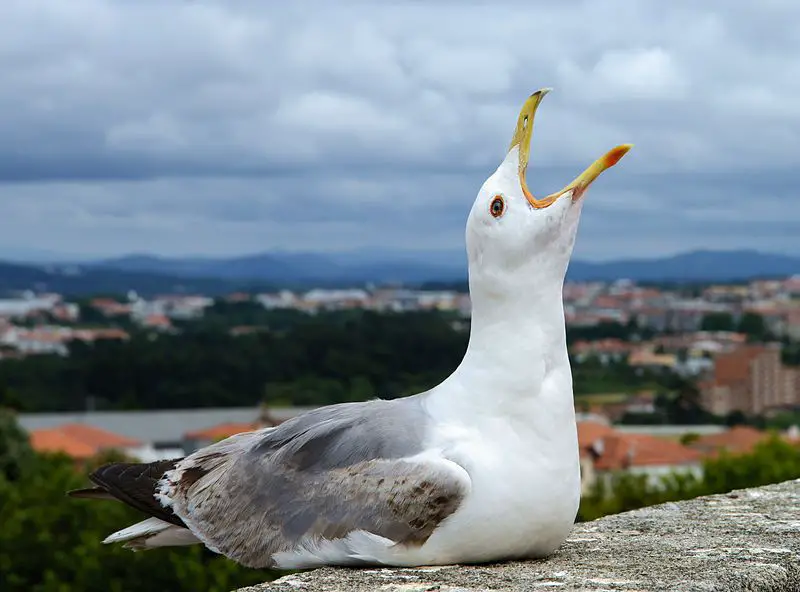
The Yellow-legged Gull is a large bird found mainly in Europe, the Middle East and North Africa.
It was previously considered to be either a subspecies of the Caspian gull or Herring Gull but has recently been identified as its own species.
The name Larus comes from Latin and likely refers to seabirds in general.
This species has yellow legs, white head with dark eyespots on each side, gray wings with black tips and pinkish legs.
They have curved bills that are yellow at the base which turn red near the tip during breeding season.
These birds feed mainly on fish but also scavenge for food when necessary such as insects, crustaceans etc.. The Yellow-legged Gull can often be seen along coastlines soaring high above fishing boats searching for their next meal.
Scientific classification:
| Kingdom | Animalia |
| Phylum | Chordata |
| Class | Aves |
| Order | Charadriiformes |
| Family | Laridae |
| Genus | Larus |
| Species | L. michahellis |
Also Featured In: Gulls Species, Flight Birds You Should Know
17. Caspian Gull
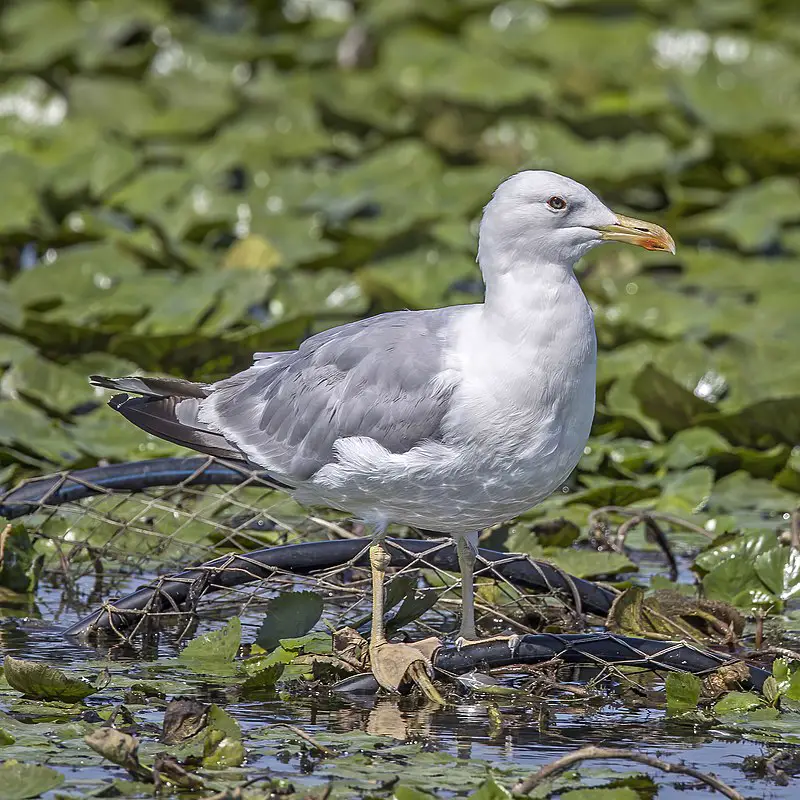
The Caspian gull is a large species of seabird found in the herring and lesser black-backed gull complex. It has a Latin name, Larus cachinnans, which translates to ‘laughing’ from its habit of making loud noises when interacting with other birds.
It measures 56–68 cm long and has an impressive wingspan ranging from 137 to 155 cm wide. Its body mass can range between 680–1 kg depending on its age and gender.
This bird generally lives near coastlines as it feeds mainly off fish caught in shallow waters or scavenged food sources such as garbage dumps; however it will also inhabit freshwater areas during breeding season for protection against predators.
All these features make the Caspian Gull one beautiful yet powerful seabird.
Scientific classification:
| Kingdom | Animalia |
| Phylum | Chordata |
| Class | Aves |
| Order | Charadriiformes |
| Family | Laridae |
| Genus | Larus |
| Species | L. cachinnans |
18. Common Moorhen
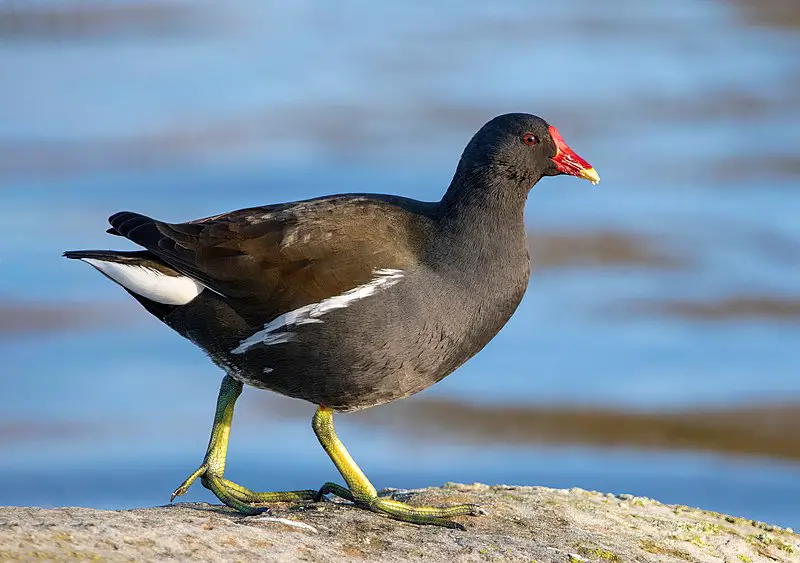
The common moorhen, also called waterhen or swamp chicken, belongs to the rail family and is widespread across various regions of the Old World.
These birds prefer to inhabit wetlands like canals, marshes, and ponds with rich vegetation. They are not found in polar regions or some tropical rainforests.
The species is known for its distinctive red forehead shield, which becomes more prominent during breeding season. Common moorhens usually feed on aquatic plants, small fishes, and invertebrates.
They are excellent swimmers and divers, but are also able to walk on floating vegetation. When threatened, they can flee by diving and swimming underwater.
Overall, common moorhens are fascinating birds that add to the diversity of wetland ecosystems.
Scientific classification:
| Kingdom | Animalia |
| Phylum | Chordata |
| Class | Aves |
| Order | Gruiformes |
| Family | Rallidae |
| Genus | Gallinula |
| Species | G. chloropus |
Also Featured In: Water Birds Live around Us, Birds of Kauai, Hawaii
19. Eurasian Magpie
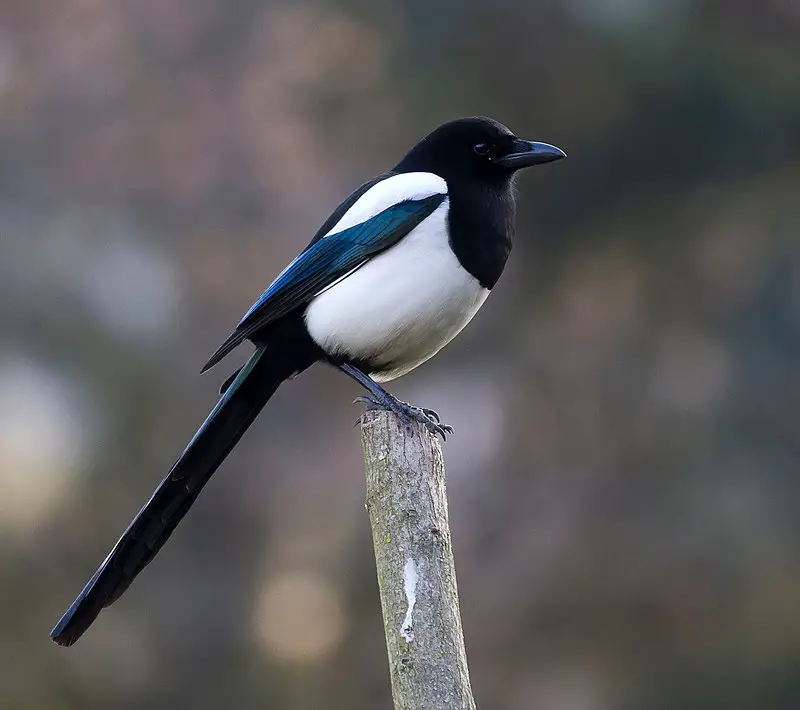
The Eurasian magpie, also known as the common magpie, is a bird found in the northern part of the Eurasian continent. It belongs to the corvids family and is part of the “monochrome” magpies.
The bird is a resident breeder that is always available in Europe. The only other magpie found in Europe is the Iberian magpie.
The magpie is often used as a synonym for the Eurasian magpie by English speakers.
The bird has a distinct black and white appearance and is known for its intelligent behavior. It can imitate sounds heard in its environment and also demonstrates self-awareness.
The Eurasian magpie is omnivorous and feeds on insects, small mammals, and fruits.
It forms monogamous pairs that last for a lifetime and builds nests in trees or bushes. The bird is not endangered and is often regarded as a nuisance due to its habit of raiding gardens for food.
Scientific classification:
| Kingdom | Animalia |
| Phylum | Chordata |
| Class | Aves |
| Order | Passeriformes |
| Family | Corvidae |
| Genus | Pica |
| Species | P. pica |
Also Featured In: Ukrainian Birds You Should Know, Common Estonian Birds